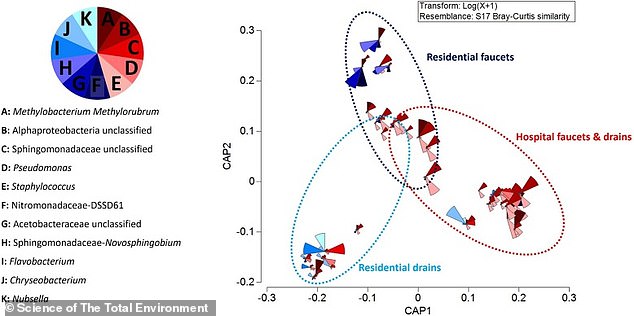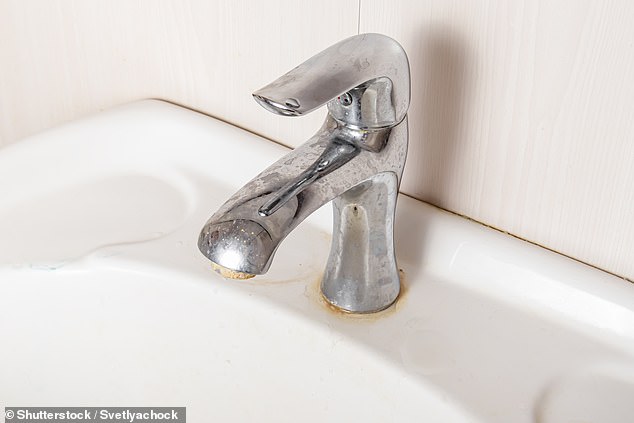The bacteria lurking in your SINK: Bathroom sinks are breeding grounds for dangerous microbes that can cause pneumonia, legionella and wound infections, research warns
- Researchers analyzed the microbes living in biofilms in hospital and home sinks
- They found insects that can cause diseases, including pneumonia
It is often seen as one of the cleanest places in the house.
But a new study may have you scrubbing your sink extra hard this weekend.
Researchers from Flinders University warn that sinks are ‘hotspots’ for dangerous microbes.
It is disgusting that these also include insects that can cause diseases such as pneumonia, legionella and wound infections.
And your sink isn’t the only place you need to worry. The study came shortly after research showed that radiation-resistant microbes can multiply in microwaves.
It’s often considered one of the cleanest places in the home. But a new study may have you scrubbing your sink extra hard this weekend (stock image)

Researchers from Flinders University have warned that washbasins are ‘hotspots’ for dangerous microbes. Disgustingly, this includes bugs that can cause diseases such as pneumonia, Legionnaires’ disease and wound infections.
Previous studies have shown that microbes live in all sorts of weird and wonderful habitats, including marine oil spills, industrial sites, and even the International Space Station.
Until now, it was unclear which bacteria can settle in the sink.
To find out, the researchers analyzed the ‘biofilms’ in sinks in hospitals and nursing homes.
A biofilm is a slimy substance that can be found in drains and around sink faucets.
Their analysis revealed that the biofilms harbor microbes that can cause pneumonia, Legionnaires’ disease and wound infections.

The researchers analyzed the ‘biofilms’ in sinks in both hospitals and nursing homes. A biofilm is the slimy substance found on drains and around the faucet of sinks (stock image)
“In both environments we found high levels of pathogenic and corrosive bacteria, including some that are not normally transmitted through water,” said Claire Hayward, lead author of the study.
The researchers suspect that these pathogens probably enter the biofilm through people washing their hands via the sink, through the water supply or via biological waste.
You would think that there would be more bacteria in hospital sinks, but surprisingly enough, that is not the case.
“Residential sinks have a greater diversity of bacteria present in biofilms than hospitals,” said Dr Harriet Whiley, one of the study’s authors.
‘There were also more Legionella bacteria present in the samples from homes than in the samples from hospitals.’
According to the team, hospital sinks are likely cleaned more frequently and thoroughly than sinks at home.
Ms Hayward added: ‘The difference in diversity of microbial communities could be due to more regular cleaning, use and design of hospital sinks through the implementation of infection control practices in healthcare.
‘This poses risks for patients receiving care at home, while this has become an alternative to long-term hospital stays to relieve the pressure on the healthcare system.’
Based on the findings, the researchers recommend that people thoroughly clean their sinks regularly.
“Patients receiving home care should be educated about infection control measures, such as cleaning sinks and drains with effective disinfectants,” Ms Hayward concluded.
